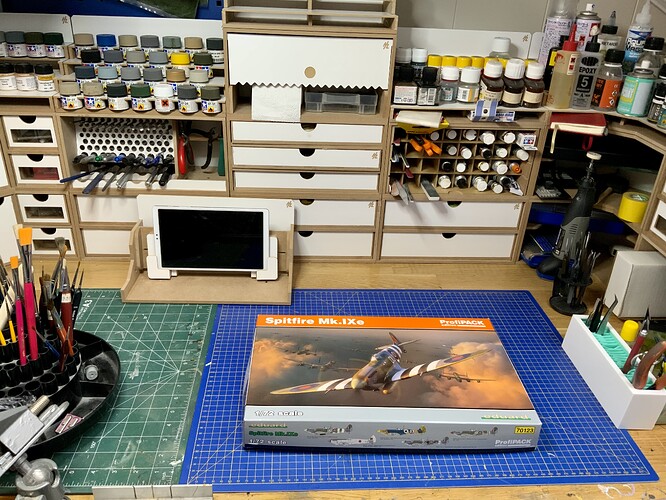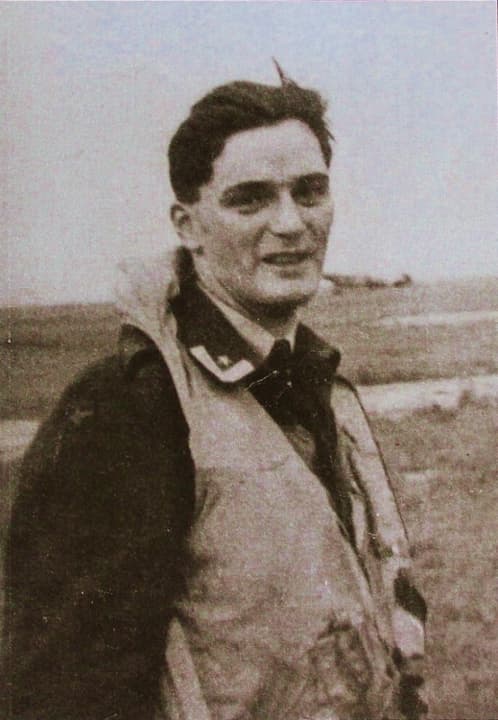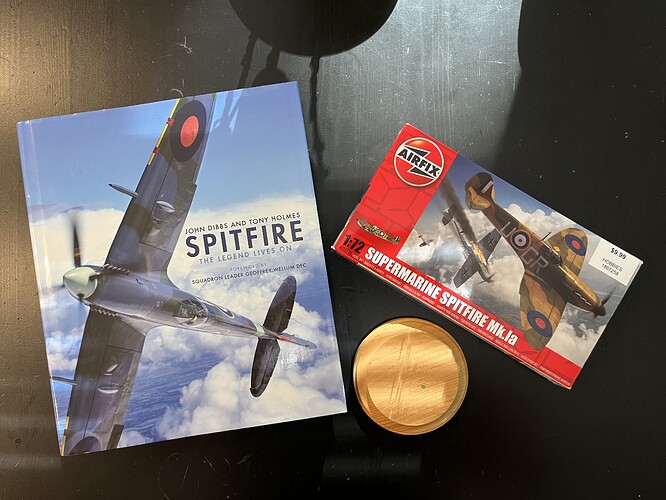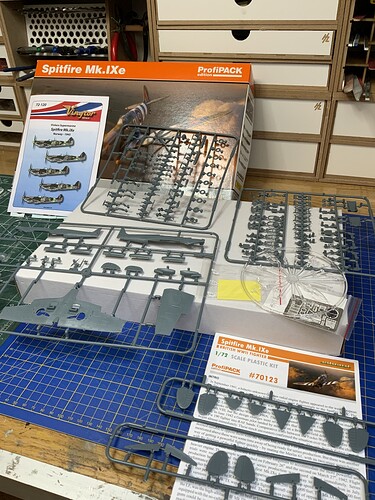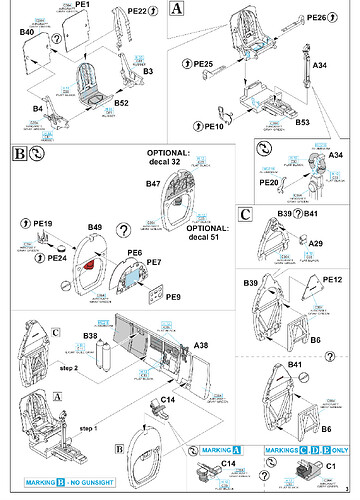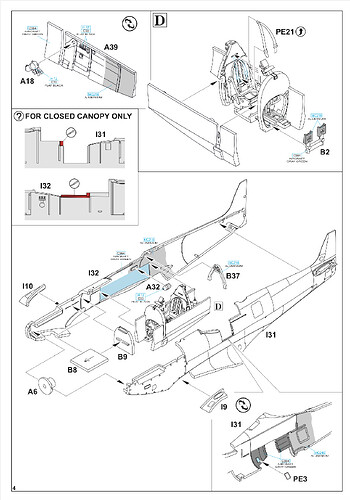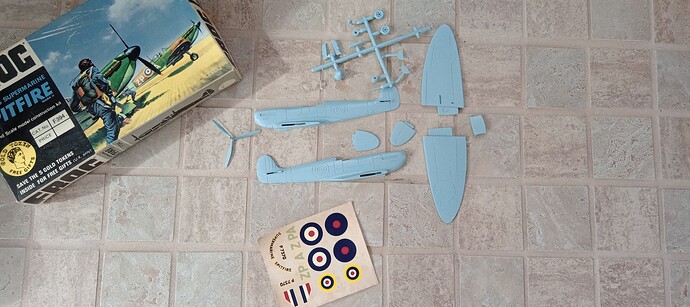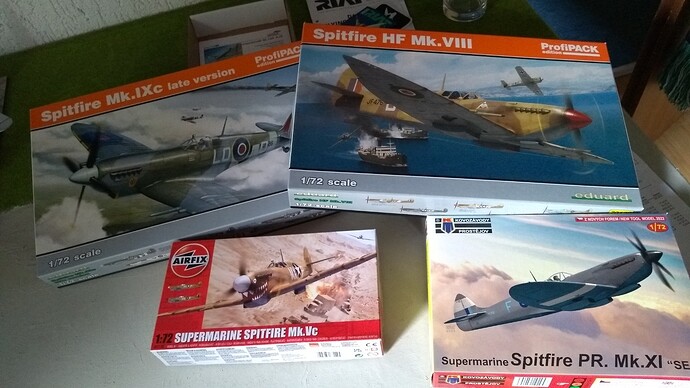Eduard has a nice cockpit interior set for the Spit
Campaign starts tomorrow and here is something about the inspiration behind my build.
I have chosen to build Lt.Gen Wilhelm Mohrs Spitfire IXe from the summer of 1945. Wilhelm Mohr was at that time the CO of 332 Squadron RNoAF. His personal plane had an uncommon marking which makes it interesting. I have only managed to find one decent picture of the plane online, but the decals from Vingtor has a pretty good description.
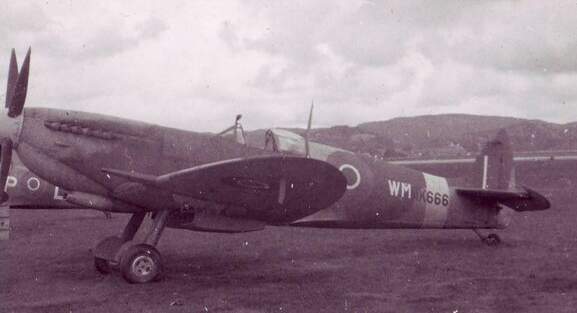
Wilhelm Mohr himself was a pretty interesting guy, and is among other things considered “the father of modern search & rescue” in Norway
This picture is taken just after Wilhelm Mohr was promoted to Major in July 1942 at North Weald.
Lieutenant General Wilhelm Mohr (1917-2016) was born at Fana in Bergen on the west coast of Norway. His interest in planes began early, as he in the mid 1930’s worked through the summer vacations washing and lubricating the floats of the Wideroe seaplanes. He was enrolled at the Norwegian Air Force’s pilot school in 1936 and learned to fly with the famous “Moth” plane. Then in 1937 Mohr started studying at the Norwegian Army’s Military Academy. In the autumn 1939 he was enrolled at the Massachusetts Institute for Technology, but the World War II put an end to this plan. World War II had raged through Europe for almost half a year when Norway was invaded by the German military machine on the morning of 9th April 1940. Mohr was then serving as pilot and Second Commander at the scout wing at Vaernes airport in mid Norway. After an impossible fight against the mighty Luftwaffe, Mohr left for Shetland and England. He went to Canada and was central in the building up of the training camp “Little Norway” and led the education of new pilots.
*In 1941 Mohr returned to England and began working with the Royal Air Force. In 1942 he became Commander of the 332 (Norwegian) Squadron, which operated over the English Channel as well as the Continent. *
H.R.H. Crown Prince Olav visited North Weald several times, and on his stay the 24th July 1942 Captain Mohr was promoted to the rank of Major.
On the 5th September 1942 H.M. King Haakon VII visited North Weald with H.R.H. Crown Prince Olav and H.R.H. Crown Princess Märtha. During the day the King presented Mohr and his colleagues In 1942 Mohr received the medal “The War Cross” with sword from H.M. King Haakon VII who visited the camp with his family. Mohr had shortly before been shot through his foot in a fight with a German plane, and received the medal with a slipper on the bandaged foot.
Mohr flew numerous raids over the channel and was often involved in dog fights with German Messerschmitts and Focke Wulfs. Luckily he always saved his life, though wounded twice. Mohr quickly became a highly esteemed Commander of the 332 (Norwegian) Squadron.
Mohr is always underlining the importance of the perfect cooperation between the pilots and the mechanics. They operated and functioned as one, and a failure to maintain the planes perfectly could mean death to the pilots.
In the spring 1944 it was clear that the German war machine was weakened and a major allied attack was about to come. The historic D-Day was under planning as "Operation Overlord”. As Mohr states; “The D-Day for the Air Force had begun a long time before the historic D-Day of 6th June. From the end of April to the D-Day the allied air forces’ loss was more than 2,000 planes and 12,000 men.”
Being one of the largest military operations in history, "Operation Overlord” managed to invade Normandy in France and break through the Germans’ Atlantic Sea Barrier. Mohr’s 332-squadron fought in the invasion, as well as the following raids liberating Belgium, Holland and finally invading Berlin.
When the war was officially proclaimed over, Mohr returned to military service in a liberated Norway. He continued in the Royal Air Force, amongst as an adjutant for H.M. King Haakon VII for three years, and later as Chief of Staff in the Air Force’s High Command. In 1957 he served as secretary to the Chairman of the Military Committee of NATO’s Standing Group in Washington. From 1963 to 1969 Mohr was Chief of the Norwegian Royal Air Force, and finally Director at the Royal Army’s College until 1975.
Even in his retirement Mohr has dedicated himself to aviation, as he from 1976 to 1989 was leader of the Norwegian Air Crash Investigation.
Wilhelm Mohr in his older days
Great story.
Good story about a great man. You might want to edit the post, as the story is twice in it ![]()
Ha Ha, you are right. Something strange happened there. I will fix it.
well since i couldn’t find aftermarket decals i will use the kit decals. i mostly like to make only aircraft with a history behind them, an ace or an aircraft that was shot down ( example- one of the zeros shot down at pearl harbor) but this does have a history so i will do the box cover craft.
here is my entry
anyone know what the correct cockpit and wheel well colors are for this time period?
Joe
Interior will be the usual RAF grey-green, Humbrol 76. Tamiya’s Japanese interior green is also a good match.
Not sure about wheel wells thinking about, possibly the same as the underside of the aircraft?
thanks, reason why i ask is there is two interior grey greens in the BOB vallejo paint set i have. not sure which one to use.
Two, that’s odd? Can you post photos of them?
I just noticed I quoted you the wrong Humbrol number, it’s 78. 76 I think is a brighter green.
Not the same person but amazing my grandfather’s name! Our family came to the UK in the 19th century, my grandfather signed up as a professional solder in 1910 and spent most of WW I fighting in East Africa before going to the Western front in 1917 where her was wounded. In end became a London cabbie, although we have a picture of him in his home guard uniform during WW 2. Anyway, sorry for hijacking thread but was such a coincidence!
yes i will when i get downstairs to the bench
I love that little Airfix kit. Great value for the money.
Well, everyone seems pretty gung ho about this one, so I’ve gone ahead and activated it a little early (after all, it’s September 1 in Old Blighty!) Have at it!
Michael ![]()
And here we go!
The Eduard kit is looking pretty good with lots of parts and options.
However, only about half of the parts are used…
And I can´t remember a more complex cockpit build on other 1/72 WW2 planes I have built. This will definatly be fun!
Well, even I might be able to cope with this number of parts:
And the instructions don’t look too taxing either:
Sadly, the canopy has succumbed to age and is less than clear; it also appears a little brittle. There’s not much I can do about it; the fit to the fuselage is poor too. As it is somewhat murky I may forgo the chore of making a seat, I don’t think anyone will be able to see it. Ditto the instrument panel but I’ll install a sliver of card there, and at the rear of the cockpit which just tunnels off into a void. I will need to make a cockpit floor and paint it black just to conceal the nothingness beneath.
As for the all too deep panel lines, I’m going to leave them; part of the fun of this build is to re-discover the joys of childhood model making as I described earlier. Mind you, I hope the finished product will be an improvement on those skills I possessed when aged 10; if not, feel free to castigate!
Well, now (or in the near future) I must decide which kit(s?) to build for this campaign…
Decisions, decisions…
That is the coolest kit I have seen in a while. Really looking forward to see it built.
Well, I’m not too sure “cool” is the right word even in a retro sense - but thanks!
I’ve just managed to get the fuselage together (well, I don’t really have to bother about much of an interior); fit is, how shall put this? Somewhat lacking.
